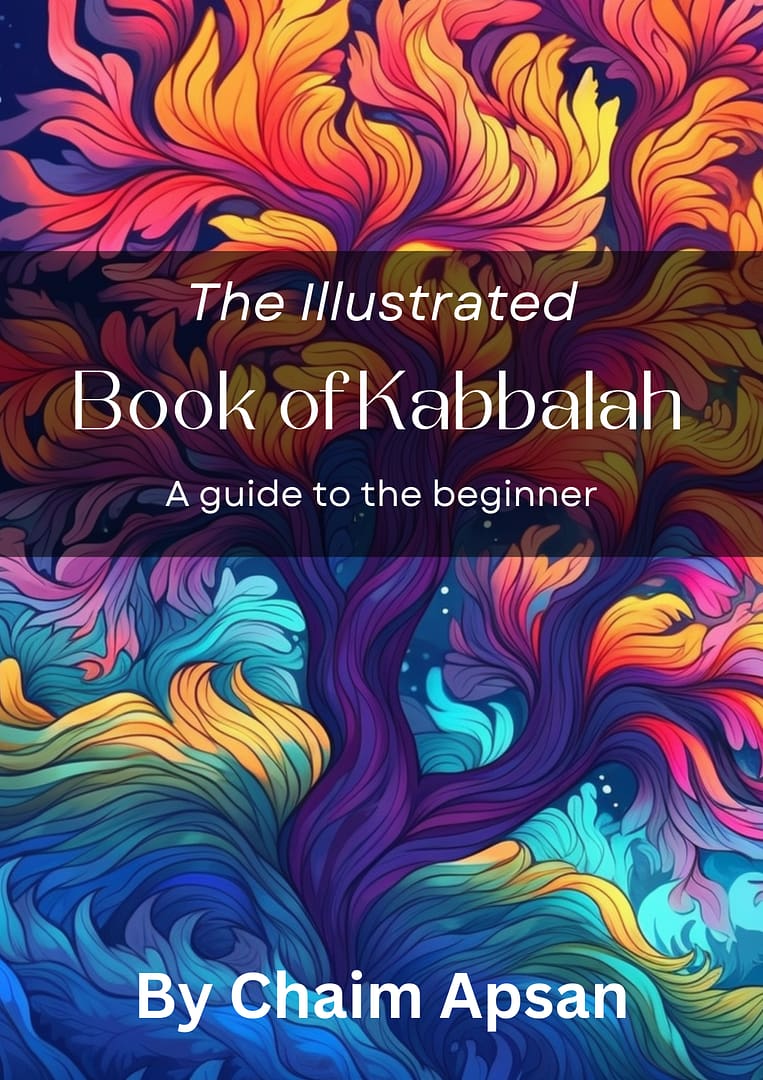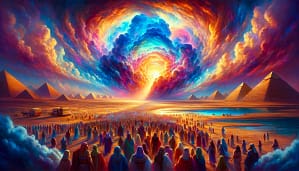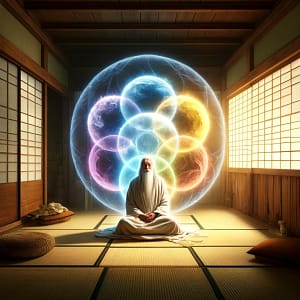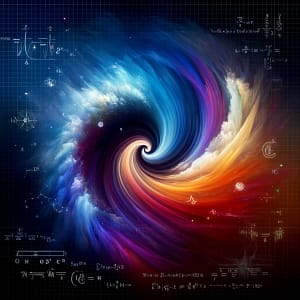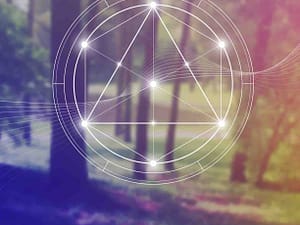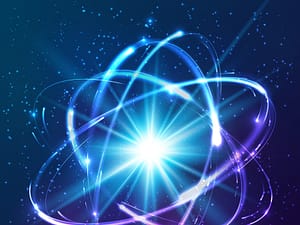The 7 Lower Sephirot are the 7 “powers of the soul” and all character traits (which require Tikkun) derive from them
Because the recording didn’t come out as great as I wanted and we had some internet problems, I am posting my free explanation on the webinar, but it will be the same content more or less.
We discussed last week the upper 3 Sephirot, Chokhmah, Binah and Da’at.
These 3 can be represented as follows:

However, we didn’t delve into Keter yet. This week we will explain what the lower Sephirot are all about.
Essentially the 7 lower Sephirot are our emotional attributes, also called “Middot” in Hebrew. If you studied some Kabbalah, you know that these are the 7 primordial vessels which shattered and that require Tikkun (rectification).
Explanation on Sephirot
The Sephirot are much more complex than what I will bring here. However, there is a lot we can learn from them even on a superficial level.
Chesed

The Sephira of Chesed represents the divine attribute of loving-kindness and is often translated as “mercy” or “love”. Chesed is an expansive force that brings abundance, kindness, and generosity to the world.
When we are kind to others, we are exercising the power of Chesed in our souls. Of course, a person can be lacking in this Sephira, in which case, his “giving” won’t be as bright, and will necessitate a Tikkun (rectification).
Chesed is often depicted as a sphere of light, representing the radiance of love and the abundant blessings that flow from it. It is a force that encourages us to connect with our hearts, to cultivate a sense of gratitude and generosity, and act with kindness and compassion in all aspects of our lives.
Chesed is associated with the element of water and also with the right arm.
Gevurah

In Kabbalah, the fifth Sephira of Gevurah represents the divine attribute of strength and might and is often translated as “severity” or “judgment.” Gevurah is the force that establishes boundaries, limits, and structure in the universe.
We all have this force in our souls. Gevurah can be understood as the power of discipline, restraint, and discernment. It is the force that encourages us to act with integrity, to set healthy boundaries, and to make difficult choices when necessary. If this Sephira has a blemish, a person may want to display his force towards others and impose his will or be confrontational and stingy.
Meditating on the Sephira of Gevurah can help to cultivate a deeper sense of discipline, discernment, and strength in our lives. By connecting with the power of Gevurah, we can learn to set healthy boundaries, to make difficult choices with clarity and confidence, and cultivate the inner strength to overcome challenges and obstacles in our lives.
Gevurah is associated with the element of fire and also with the left arm.
Tiferet

The sixth Sephira of Tiferet represents the divine attribute of beauty and is often translated as “harmony,” “balance,” or “compassion.” Tiferet is the force that brings together the energies of Chesed and Gevurah, creating a synthesis of love and strength in the universe.
It is the force that encourages us to find a middle ground between the extremes of Chesed and Gevurah, to cultivate a sense of compassion and understanding towards ourselves and others and is the source of truth. A blemished Tiferet may result in a person engaging in Lashon Harah (evil speech), flattery or mockery, which essentially means turning “beauty” into “ugly”.
Tiferet is where proper judgment (in Hebrew, Mishpat) is situated, as one cannot veer to the left or right, but must find the perfect balanced point for the law to take place. This Sephirah also has a connotation of beauty, because like any good music is the balance and proper setting of notes, beauty is the harmonization of all the components of a thing.
Tiferet is associated with the element of wind and also with the trunk.
Netzach

In Kabbalah, the seventh Sephira of Netzach represents the divine attribute of victory but is also translated as “eternity,” “endurance,” or “perseverance.” Netzach is the force that drives us toward success and achievement, helping us to overcome obstacles and challenges in our lives.
Other examples of Netzach are the power of perseverance, determination, and victory. It is the aspect of our souls that encourages us to keep going even in the face of adversity, to trust in our own abilities and strengths, and to never give up on our dreams and goals.
Self worth comes from Netzach, so one who lacks self-worth or no desire to succeeded in endeavors has a blemished Netzach.
Netzach is associated with the right leg.
Hod

In Kabbalah, the eighth Sephira of Hod represents the divine attribute of splendor and is often translated as “glory,” “majesty,” or “praise.” Hod is the force that allows us to appreciate and celebrate the beauty and wonder of the universe.
Hod is the force that encourages us to find beauty in all aspects of our lives, to cultivate a sense of wonder and curiosity, and to express our gratitude for the blessings in our lives. This is very important for a variety of reasons, such as understanding the greatness of Hashem and praising him.
It is a force that encourages us to cultivate a sense of curiosity, to flow with the ups and downs of life, and to trust in the divine plan. It’s not easy, but we must accept it. As such, this Sephira is also associated with humility, which is the opposite of arrogance when Hod is blemished.
By connecting with the power of Hod, we can learn to appreciate the beauty and wonder of the universe, to cultivate a sense of inner peace and tranquility, and to express our gratitude for the blessings in our lives.
In the Zohar, Netzach and Hod are considered the sources of prophecy from the world of Atzilut and the connections to the lower spiritual worlds.
Hod is associated with the left leg.
Yesod

The ninth Sephira of Yesod represents the divine attribute of foundation and is often translated as “foundation”. Yesod is the force that connects the physical world with the spiritual world and acts as a bridge between the two.
Yesod can be understood as the power of connection, integration, and manifestation. It is the force that allows us to bring our dreams and visions into physical reality, to connect with our deepest desires, and manifest our highest potential.
Working with the energy of Yesod can help to cultivate a deeper sense of connection, integration, and manifestation in our lives. By connecting with the power of Yesod, we can learn to trust in our intuition, to align our thoughts, feelings, and actions with our deepest desires, and to manifest our highest potential in the physical world.
Yesod is associated with the sexual organ.
Malkhut

In Kabbalah, the tenth Sephira of Malkhut represents the divine attribute of kingdom and is often translated as “royalty,” “dominion,” or “sovereignty.”
Malkhut is the force that brings the divine into the physical world and allows us to experience His sovereignty in our everyday lives by accepting His Torah and Mitzvot.
The paradigm of Malkhut is, of course, King David, who fought the wars of Hashem and established His Kingship in the Jewish golden era.
Since Malkhut is the last and lowest Sephira, and therefore the closest one to the domain of evil, the corresponding Festival is Tisha B’Av, when we mourn the destruction of both Holy Temples.
However, this is also the day when Mashiach will be born (or crowned with a new soul), and despite our mourning observances, this Festival holds incredible power of renewal.
This Sephira is the force that allows us to bring our spiritual ideals and aspirations into physical reality, to ground ourselves in the present moment, and to embody Hashem’s will in our daily lives.
Malkhut of Atzilut is also called the Shekhina, representing the stability and solidity to sustain the lower realms.
Malkhut is associated with the element of earth and also to the crown of the sexual organ.
Systems of Sephirot upon Systems of Sephirot
As explained in the last webinar, there are many systems intertwined with 10 Sephirot, and another 10 Sephirot within these 10 and so on and so forth. This is part of a more advanced subject of the different spiritual systems, called the Partzufim, as explained by the Holy Rabbi Shalom Sharabi (the Rashas’h).
But here we can dip our toes a little into understanding how the Sephirot are also related to other parts of the human body:
Keter – Skull
Chokhmah – Right Brain
Bina – Left Brain
Da’at – Middle of the brain (Some would say Third eye)
Chesed – Right Arm
Gevura – Left Arm
Tiferet – Trunk
Netzach – Right Leg
Hod – Left Leg
Yesod – Sexual organ
Malkhut – Crown of the sexual organ
The face also has its own structure, more or less as follows (depending on the source).
This is how the system of Months is structured, 2 sets of 6 (for both the Partzuf of the Shekhina during summer time as well as the Partzuf of Zeir Anpin during winter time), which is 12.
Sometimes we have 13 months, in which case we add Malkhut to the set:
Chesed – Skull
Gevurah – Right ear
Tiferet – Left ear
Netzach – Right eye
Hod – Left eye
Yesod – Nose
Malkhut – Tongue or lips
We also have 613 Mitzvot from the Torah, which also correspond to a specific part of the human body. In performing them we are rectifying them.
There’s a very important Jewish principle that Ethics and Laws are one and the same.
The basis for Jewish Law is the Mishnah, which together with the Gemara form the Talmud. According to the Zohar, the Talmud in itself is divided into 6 parts which correspond to the 6 lower Sephirot that require rectification (they are also another system):
Zeraim – Laws of the Land and produce (Chesed)
Moed – Laws of Festivals and Shabbat (Gevurah)
Nashim – Laws of marriage, vows and women in general (Tiferet – Beauty, which women hold more)
Nezikim – Civil laws (Netzach – Eternity, enables society to function)
Kodashim – Laws of Holy things (Hod – awe, splendor of the service)
Taharot – Laws of purity (Yesod – the organ which must be sanctified)
Laws are meant to help us keep a state of conscious awareness of the divinity in pretty much everything we do. It might seem like a lot, but great artists made their work by following rigid rules as to what brings the best results (though they, of course, innovated a lot). We too can develop and our souls forth by not engaging in bad habits, much like one should refrain from smoking, and not give in to temptation.
Balance is crucial.
The Torah Laws are meant to teach us discipline while at the same time allowing for many leniencies to “enjoy life”.
We work 6 days of the week (associate with the 6 Sephirot, Chesed [Sunday], Gevurah, Tiferet, Netzach, Hod and Yesod) and rest on Shabbat (Malkhut), when we receive the fruits of our efforts by enjoying it fully and without distractions.
In this way, we are fulfilling the weekly cycle in a way that can bring us blessings.
Meditation on Sephirot
I want to end this article with a few tips to meditate on Sephirot. Meditation works pretty much using imagination. Whatever you imagine has a deep effect on your soul.
When, for example, doing some kindness to someone, you can meditate that you are drawing down the Sephira of Chesed to you, a bright blue light.
When restricting yourself from something, that a holy fire is cleansing you, and so on and so forth. When receiving insults and keeping quiet (which is a very high level), one can imagine the light of Tiferet and Hod healing him (since one increases humility and awe of God).
This really is a matter of personal choice, each person has their own way of meditating and there are many valid ways of bringing the system of 10 Sephirot to our lives.

